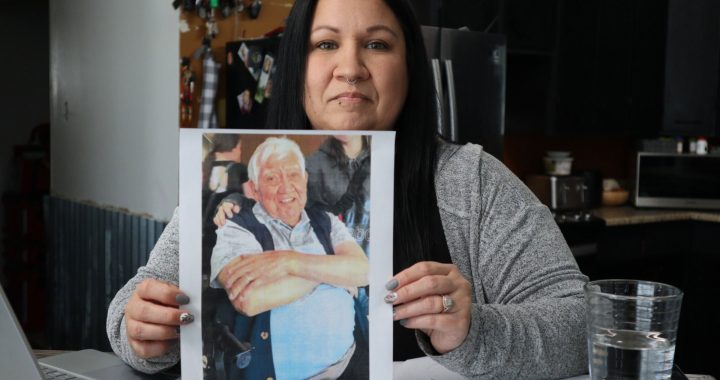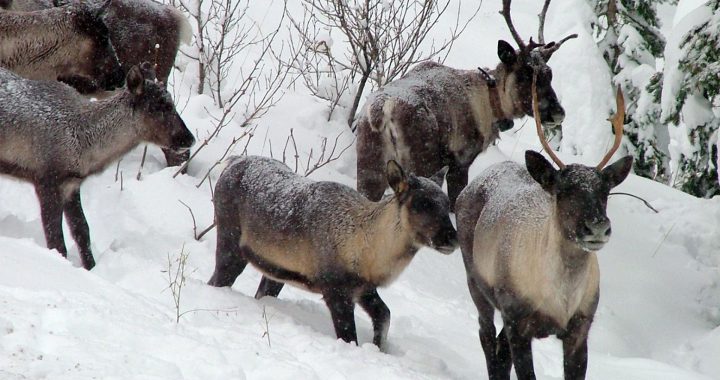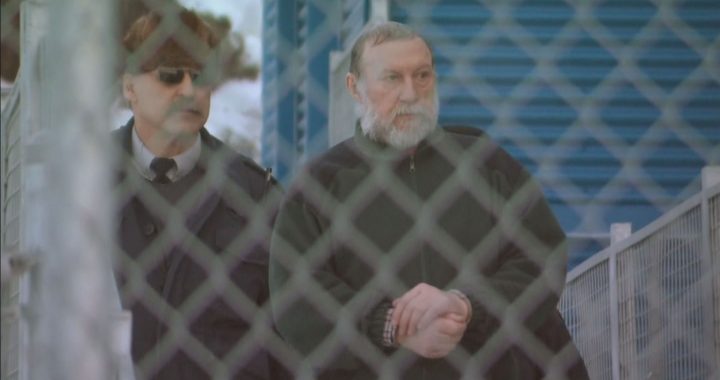The sound and smell of sturgeon sizzling in a frying pan filled the morning air at the junior high school in Sagkeeng Anicinabe Nation, north of Winnipeg.
The sensorial experience was part of the school’s land-based harvest week activities where students learned cultural practices like filleting fish and skinning deer.
“Remember [what] I was showing you. Don’t be scared, he’s dead,” said Elder Ron Guimond to a young student learning how to remove the scutes off a 20 lb sturgeon.
Guimond taught the children how the sturgeon eats clams with its strong jaws and the three different ways it can be prepared for a meal.
He’s one of the many adults who showed the kids important life skills and traditional knowledge of how to live on the land.
Math teacher Allan Courchene said this week of learning is crucial because some students’ parents may not have the necessary experience to teach them.
“I want our kids to learn their traditions because they’ll know who they are and what community they’re from,” said Courchene. “What kind of practices we did and are still continuing … that process of harvesting. Our ways of life”
A report by Statistics Canada said “[q]uality, culturally appropriate, and accessible education is essential to the preservation and prosperity of First Nations communities.”
It further identifies the Truth and Reconciliation Commission’s findings that “the legacy of residential schools, inadequate funding, and the absence of culturally relevant curricula has had a profound impact on the educational success of First Nations youth, particularly those living on reserve.”
It was clear through the laughter and concentration that the students were happily involved in the activities.
Bannock making was a huge hit with the students. Baked bannock and also fried bannock were cooked by and for the students to enjoy.
“A loaf of bread is almost four bucks, five bucks today and this is cheaper,” said instructor Claudette Courchene. ”It’s cheaper to do it this way and also the kids enjoy doing it. It gives them some kind of sense of pride in making it.”
“It’s good for surviving,” added Ojibwe language instructor Vernon Paul. “I always tell them ‘Always buy the ingredients for bannock, you’ll never go wrong, you’ll never go hungry.’”
Moving indoors, arts and crafts were taking place inside the First Nation’s only junior high school.
The seven sacred teachings were the theme of the painting class. With students colouring in graphics, teacher Chloe Courchene created the guiding principles – humility, truth, honesty, courage, respect, love, and wisdom.
Beadwork taught the students patience and perseverance, a skill beadwork teacher Marsha Bruyere said she wishes she knew when she was their age.
“It makes me happy when I see their projects coming along, when they’re getting closer you know I just get so happy and excited for them,” said Bruyere.
The kids learned geometry and sewing while making 8-point star pillow shams in the sewing workshop.
Their teacher Jolene Chippeway said learning these new skills are a great reminder that it’s always okay to make a mistake.
“It’s always an inspiration to watch our kids grow and learn and be interactive with these kinds of activities,” said Chippeway. “It’s something positive, they’re engaged. You know, you watch them struggle through trying to you know learn something new and letting them know that it’s okay to make mistakes and have fun, you know, laugh at yourself.”
Allan Courchene said these new skills will be used throughout the students’ lives.
“If you expose them to art and some traditional art that they’ve never tried, maybe we’ll have some good artists. Or else it brings out different characteristics in their regular life,” he said. “Some of the kids … just loved filleting a fish. Maybe that’s something for them to work at, maybe they’ll become a chef.”
“It enhances some of their skills and maybe it opens somebody’s mind that maybe they want to do one of those traditions.”
No matter what they choose to do when they’re older, for now, the kids get to have fun learning with their friends.
“They’re all intermingling, so now you’re building friendships and not only friendships [but] learning how to do things that are important to our community,” he said.










